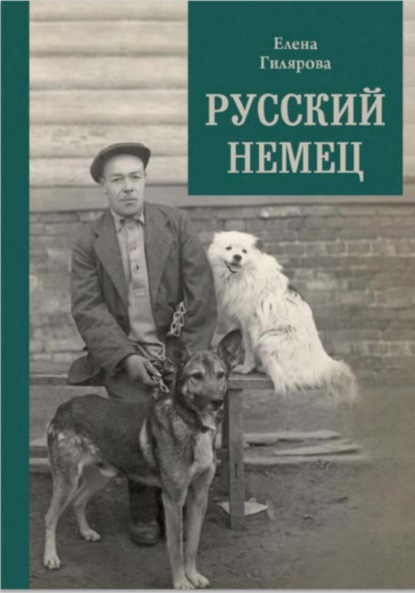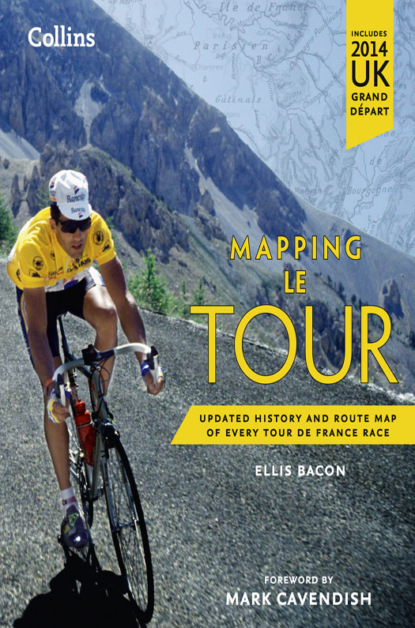По всем вопросам обращайтесь на: info@litportal.ru
(©) 2003-2024.
✖
Mapping Le Tour: The unofficial history of all 100 Tour de France races
Настройки чтения
Размер шрифта
Высота строк
Поля
Thirty-three-year-old Belgian Lucien Buysse, second to Bottecchia in 1925, won overall in 1926, despite receiving the shocking news on stage 3 that his daughter had died. He only continued in the race after being encouraged to do so by his family.
His younger brother, 24-year-old Jules, had won the opening stage between Évian and Mulhouse by a massive 13-minute margin, and held yellow until stage 3. They became – and remain – the only brothers to wear the yellow jersey in the same edition of the race.
The Tour’s globalisation continued, too, when Kisso Kawamura became the first Japanese rider to take part – although he abandoned during the first stage.
Lucien Buysse powers to victory despite personal tragedy
1927 (#ulink_243e008e-0037-5637-ab0b-dc7c054278e7)
21st Edition (#ulink_243e008e-0037-5637-ab0b-dc7c054278e7)
Francis Pélissier’s older brother, Henri, had done little to impress Tour organiser Henri Desgrange over the years. The two were almost permanently at loggerheads over how tough the race was – Henri the rider believing that it was too hard; organiser Henri always on the hunt for something to make it even harder. Even Henri’s 1923 victory displeased the race founder: it meant he had to put Pélissier on the cover of his newspaper.
One can only imagine, then, Desgrange’s feelings when Francis Pélissier became the first rider to quit the Tour while clad in the by-now hallowed yellow jersey. He was simply unable to match the speed set by his Dilecta-Wolber team-mates on stage 6 – one of the race’s many team time trials – and waved them onwards once it all became too much. It was in fact a good call: his team-mate, Ferdinand Le Drogo, took yellow in Brest that evening, although, by the end of the ninth stage, the whole eight-man team had quit the race.
It’s a dubious ‘honour’ for the young Pélissier to hold. Only fifteen riders have ever abandoned while in the yellow tunic, Britain’s Chris Boardman being another, in 1998, with the latest being Michael Rasmussen at the 2007 Tour, thrown out by his Rabobank team for having lied on his UCI ‘whereabouts’ form about where dope testers would be able to find him. He told them Mexico; he was training in Italy.
Nicolas Frantz became the second rider from Luxembourg to win the race, following in the tyre tracks of 1909 champion François Faber.
Dinan, Vannes, Pontarlier and Charleville were used as stage starts/finishes for the first time in a race made up of a massive twenty-four stages, with sixteen of those run as team time trials, in which teams started at 15-minute intervals, confusing the spectators immensely. Sponsored teams – usually headlined by bicycle manufacturers – had only just begun to reappear following a number of financially difficult post-war years for the major bike brands, such as Alcyon, Dilecta and JB Louvet.
André Leducq (left) and Tour champion Nicolas Frantz (right)
1928 (#ulink_243e008e-0037-5637-ab0b-dc7c054278e7)
22nd Edition (#ulink_243e008e-0037-5637-ab0b-dc7c054278e7)
Nicolas Frantz’s convincing 1927 Tour win was repeated in 1928, and this time he became only the second rider to hold the yellow jersey all the way from start to finish. Ottavio Bottecchia had been the first to perform the feat, in 1924, but that was ‘only’ over fifteen stages. Luxembourger Frantz defended it over twenty-two stages.
It was touch and go as late as stage 19 between Metz and Charleville, however, when a mechanical problem lost Frantz 40 minutes to stage winner Marcel Huot of the Alleluia-Wolber outfit, but by that point in the race, Frantz had enough of a buffer over team-mate André Leducq to ensure that the race was in the bag anyway.
Leducq, having finished fourth overall, and best Frenchman, the year before, held the French end up again, improving this time to finish runner-up to his Alcyon team-mate, the dominant Frantz. The importance of team riding continued to grow – in the Tour’s first couple of decades in existence, riders rode very much for themselves – and Desgrange stuck with the team time trial format for most of the race, despite the confusion of the roadside crowds. Of the Tour’s twenty-two stages, fifteen were held as team time trials.
One of those teams was the French-sponsored, but green-and-gold-jerseyed, Ravat-Wonder-Dunlop squad, made up of three Australian riders – Ernie Bainbridge, Hubert Opperman (knighted in 1968 for his work as the Maltese High Commissioner) and Perry Osborne – plus a Kiwi, Harry Watson.
Nicolas Frantz won despite losing 40 minutes due to a mechanical problem
1929 (#ulink_243e008e-0037-5637-ab0b-dc7c054278e7)
23rd Edition (#ulink_243e008e-0037-5637-ab0b-dc7c054278e7)
“My race has been won by a corpse.”
Organiser Henri Desgrange bemoans the ailing Belgian Maurice De Waele having won the Tour after being helped by his team-mates
Nicolas Frantz and André Leducq had dominated the 1928 Tour as Alcyon team-mates, and that looked set to continue in 1929 when Leducq won the second stage between Caen and Cherbourg, with Frantz following up with victory in Bordeaux on stage 7.
Frantz, Leducq and Elvish-Wolber’s Victor Fontan finished that seventh stage sharing the same overall accumulated time, and in first place at that, which, after 1448 km (900 miles) by that point, was more than a little extraordinary. Unable to separate them, all three were awarded a yellow jersey to wear on the next day’s stage.
While Belgian rider Gaston Rebry took over the yellow jersey from the trio on the next stage, Fontan again took sole control of the race on stage 9. On stage 10, however, Fontan’s forks broke and – after losing too much time – he broke down upon the realisation that his race was over. The Frenchman became the second rider in three years to quit the race while wearing the yellow jersey, after Francis Pélissier in 1927.
Leducq – despite five stage wins in total – and Frantz had fallen out of contention as the race progressed, but their Alcyon team-mate, Maurice De Waele, found himself in a good position to win the race, in second place behind Fontan prior to stage 10. However, De Waele fell ill on that stage and Alcyon’s new plan looked set to derail. De Waele struggled through, though, to take the yellow jersey by default, and from that point on, De Waele’s Alcyon team-mates somehow managed to shepherd him through the rest of the race to Paris and overall victory.
Henri Desgrange was not happy with what in his eyes was an unworthy winner. The power that he felt the bike-manufacturer-sponsored teams held over his race enraged him. It was soon fixed: the next edition, in 1930, would have the riders competing for national, rather than sponsored, teams.
Feverish spectators cheer on the peloton between Belfort and Strasbourg
1930 (#ulink_243e008e-0037-5637-ab0b-dc7c054278e7)
24th Edition (#ulink_243e008e-0037-5637-ab0b-dc7c054278e7)
The Tour headed into the fourth decade of the twentieth century with some revolutionary changes. Having become annoyed with the sponsored teams dictating how his race was ridden, Henri Desgrange responded by organising the 1930 edition of the Tour as one for national teams, and it would remain that way until 1962. The sponsors – most of them bicycle manufacturers – were damaged further in 1930 by Desgrange’s insistence that all participants rode identical yellow bicycles provided by the race organisers.
The team time trials of the previous few years were gone, too, but the race retained the ‘outside circuit’ of the country, continuing to avoid central France entirely.
There were some new stage towns on the route, however, and these included Cannes, Montpellier and Pau, with the latter two, in particular, going on to be well used by the race in the future thanks to being large towns with the ability to house the Tour’s ever-increasing convoy. In fact, 1930 was the first time that the famous publicity caravan appeared – a cavalcade of floats promoting the race’s advertising partners’ products.
André Leducq had won five stages in 1929, and although he ‘only’ won two on his way to his victory in 1930, his team-mate Charles Pélissier – the youngest of the three Pélissier brothers – took eight stages: a record he now shares with Eddy Merckx and Freddy Maertens.
Marcel Bidot, Magne brothers Pierre and Antonin, André Leducq and Charles Pélissier (left to right) pose with matching bikes
1931 (#ulink_243e008e-0037-5637-ab0b-dc7c054278e7)
25th Edition (#ulink_243e008e-0037-5637-ab0b-dc7c054278e7)
Just as it had with each year that passed, the Tour continued to grow both in prestige and in renown, and there were more ‘firsts’ as Max Bulla became the first Austrian to wear the yellow jersey, following his win on stage 2 between Caen and Dinan, and the race added Gap, Aix-les-Bains and Colmar as first-time stage hosts – more towns that would later become real regulars on the Tour’s route.
Frenchman Antonin Magne gained his first of two Tour victories, taking decisive control of the race once it hit the mountains for the first time on stage 9 between Pau and Luchon, which took the riders over the by now extremely tried and tested Col d’Aubisque and Col du Tourmalet. The yellow jersey then remained safely on Magne’s capable shoulders all the way to Paris, where a ‘pitch invasion’ – or, rather, a track invasion – welcomed him home as the winner once the race reached the velodrome at the Parc des Princes.
If Magne was a great rider, he was an even better directeur sportif, going on to manage the mighty mauve Mercier team in the 1950s and 1960s, whose charges included Raymond Poulidor, Jean Stablinski and Britain’s Barry Hoban.
Charles Pélissier and Antonin Magne recover after the gruelling stage from Nice to Gap
1932 (#ulink_243e008e-0037-5637-ab0b-dc7c054278e7)
26th Edition (#ulink_243e008e-0037-5637-ab0b-dc7c054278e7)
André Leducq – winner of the 1930 Tour – was back on form, and firing on all cylinders for the 1932 race. His compatriot, and 1931 champion, Antonin Magne, was a non-starter for the French national squad, and instead Leducq’s biggest challenge came from within the German team.
Kurt Stoepel won the sprint for stage 2 between Caen and Nantes from a thirteen-man group that included Leducq. When the Frenchman won stage 3 into Bordeaux, it was game on between the two. Stoepel had become the first German rider to wear the yellow jersey after his stage win, but once the race hit the Pyrenees, Leducq began to stride out and, come the Alps, the French rider held a lead of just over three minutes from his German rival.
Leducq steadily increased his lead over Stoepel on the climbs, winning stage 13 from Grenoble to Aix-les-Bains over some tough climbs including a snow-covered Col du Galibier – consistently the highest mountain scaled by the Tour peloton – which, at 2556 m (8386 ft), was covered in snow despite the high temperatures of a French summer. By the time the race reached Paris – Leducq having also won the last two stages, just for good measure – Stoepel was a massive 24 minutes behind, and it was a third straight victory for a French rider since the introduction of the national-teams format.
A triumphant André Leducq jokes with the media after taking his second Tour de France crown
1933 (#ulink_243e008e-0037-5637-ab0b-dc7c054278e7)
27th Edition (#ulink_243e008e-0037-5637-ab0b-dc7c054278e7)





